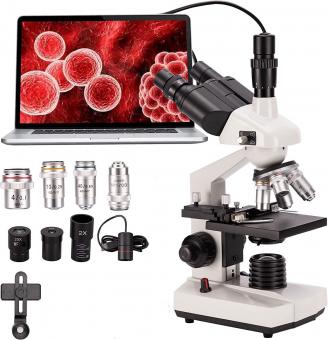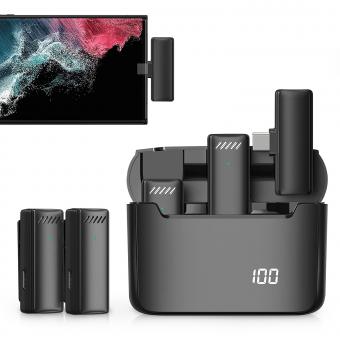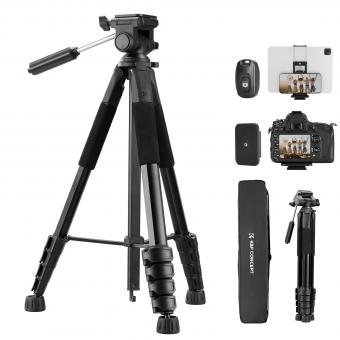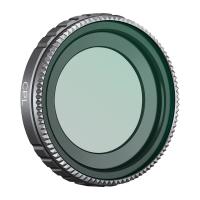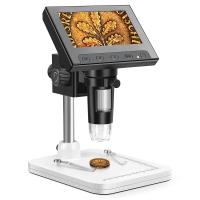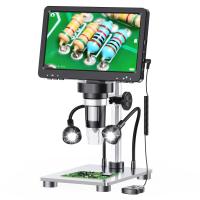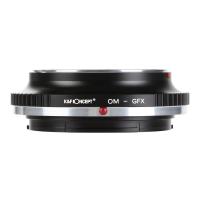Can You View Live Specimen Electron Microscope ?
Yes, live specimens can be viewed using an electron microscope.
1、 Real-time imaging of live specimens using electron microscopy
Yes, it is possible to view live specimens using an electron microscope. Traditionally, electron microscopy has been used to study fixed and stained samples due to the high vacuum environment required for imaging. However, recent advancements in technology have allowed for the development of techniques that enable real-time imaging of live specimens using electron microscopy.
One such technique is called cryo-electron microscopy (cryo-EM). Cryo-EM involves rapidly freezing the specimen to preserve its natural state and then imaging it in a cryogenic environment. This technique has revolutionized the field of structural biology, allowing researchers to visualize biological macromolecules and complexes in their native state. Cryo-EM has been used to study a wide range of live specimens, including viruses, bacteria, and even cells.
Another technique that enables real-time imaging of live specimens is called environmental scanning electron microscopy (ESEM). ESEM allows for imaging of specimens in a controlled, humid environment, which is closer to their natural habitat. This technique has been used to study dynamic processes in live cells, such as cell division and cell migration.
It is important to note that while real-time imaging of live specimens using electron microscopy is possible, there are still limitations. The high-energy electron beam used in electron microscopy can damage biological samples, and the imaging process itself can be time-consuming. However, ongoing research and technological advancements are continuously improving the capabilities of electron microscopy for live specimen imaging.

2、 Advances in electron microscopy for live specimen visualization
Yes, advances in electron microscopy have made it possible to view live specimens using electron microscopes. Traditionally, electron microscopy has been limited to the study of fixed and stained samples due to the high vacuum and harsh conditions required for imaging. However, recent developments in electron microscopy techniques have allowed for the visualization of live specimens, providing valuable insights into dynamic biological processes.
One such technique is cryo-electron microscopy (cryo-EM), which involves rapidly freezing the specimen to preserve its natural state. By rapidly freezing the sample, it is possible to capture the specimen in a vitrified, amorphous ice state, which minimizes structural damage and allows for high-resolution imaging. Cryo-EM has revolutionized the field of structural biology, enabling the visualization of macromolecular complexes and cellular structures in their native environment.
Another technique that has emerged is environmental scanning electron microscopy (ESEM), which allows for the imaging of specimens in a controlled, hydrated environment. ESEM overcomes the limitations of traditional electron microscopy by maintaining a higher pressure within the microscope chamber, allowing for the imaging of wet or hydrated samples. This technique has been particularly useful for studying biological samples, such as cells and tissues, in their natural state.
Furthermore, recent advancements in electron microscopy technology, such as faster detectors and improved imaging software, have enhanced the capabilities of live specimen visualization. These advancements have enabled real-time imaging and the capture of dynamic processes at high resolution.
In conclusion, advances in electron microscopy have indeed made it possible to view live specimens. Techniques such as cryo-EM and ESEM, along with technological advancements, have opened up new avenues for studying dynamic biological processes and have provided valuable insights into the intricate workings of living organisms.
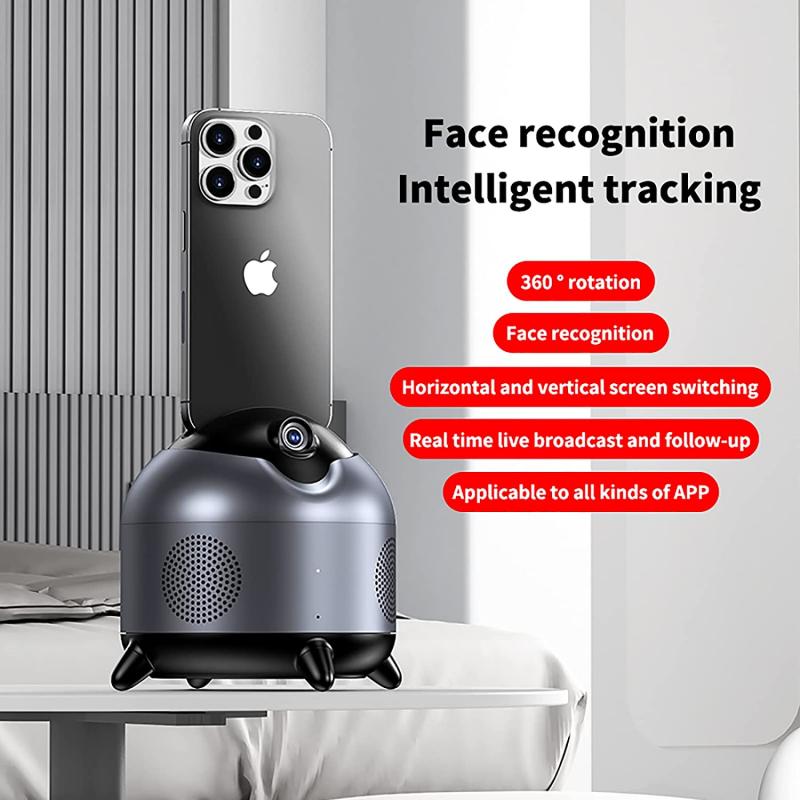
3、 Techniques for observing live specimens with electron microscopy
Yes, it is possible to view live specimens using an electron microscope, although it is not as straightforward as with light microscopy. Electron microscopy is a powerful tool that uses a beam of electrons instead of light to image specimens at a much higher resolution. However, the high vacuum environment required for electron microscopy makes it challenging to observe live specimens directly.
To overcome this limitation, several techniques have been developed to enable the observation of live specimens with electron microscopy. One such technique is cryo-electron microscopy (cryo-EM), which involves rapidly freezing the specimen to preserve its natural state. This technique has revolutionized the field of structural biology, allowing researchers to visualize biological macromolecules and complexes in their native environment.
Another technique is environmental scanning electron microscopy (ESEM), which allows for the imaging of specimens in a controlled gaseous environment. This technique has been used to observe live cells, tissues, and even small organisms. ESEM provides a more realistic view of the specimen's behavior and dynamics compared to traditional electron microscopy.
Furthermore, recent advancements in electron microscopy technology, such as the development of faster detectors and improved sample preparation methods, have further enhanced the ability to observe live specimens. These advancements have enabled real-time imaging of dynamic processes, such as cellular movements and reactions, at high resolution.
In conclusion, while observing live specimens with electron microscopy is challenging, various techniques and technological advancements have made it possible to study biological samples in their natural state. These techniques continue to evolve, pushing the boundaries of what can be observed and providing valuable insights into the dynamic behavior of living organisms.

4、 Challenges and solutions for imaging live specimens with electron microscopy
Challenges and solutions for imaging live specimens with electron microscopy have been a topic of great interest and research in recent years. Electron microscopy is a powerful tool for high-resolution imaging, but its application to live specimens has been limited due to several challenges.
One of the main challenges is the sensitivity of biological samples to the high-energy electron beam. The beam can cause damage to the specimen, leading to artifacts and loss of biological integrity. To address this issue, researchers have developed various techniques to minimize beam damage, such as using lower beam energies, reducing exposure time, and employing cryo-fixation methods. These approaches have shown promising results in preserving the structure and function of live specimens.
Another challenge is the need for specialized equipment to maintain the viability of the specimen during imaging. Live specimens require a controlled environment with precise temperature, humidity, and gas composition. Advanced electron microscopy systems now incorporate environmental chambers that can provide these conditions, allowing researchers to image live specimens for extended periods.
Furthermore, the development of correlative light and electron microscopy (CLEM) techniques has greatly facilitated the imaging of live specimens. CLEM combines the advantages of light microscopy, which allows for real-time observation of dynamic processes, with the high-resolution imaging capabilities of electron microscopy. This approach enables researchers to track specific cellular events using light microscopy and then precisely locate and image the same events using electron microscopy.
In recent years, there have been advancements in electron microscopy techniques that enable the imaging of live specimens with higher resolution and improved preservation of biological structures. For example, the development of low-dose imaging techniques and the use of advanced detectors have allowed for the visualization of delicate cellular structures in real-time.
In conclusion, while there are challenges associated with imaging live specimens with electron microscopy, significant progress has been made in overcoming these obstacles. The development of techniques to minimize beam damage, the incorporation of environmental chambers, and the advancement of correlative microscopy approaches have all contributed to the successful imaging of live specimens. With continued research and technological advancements, the ability to view live specimens with electron microscopy will likely continue to improve, providing valuable insights into the dynamic processes of biological systems.



